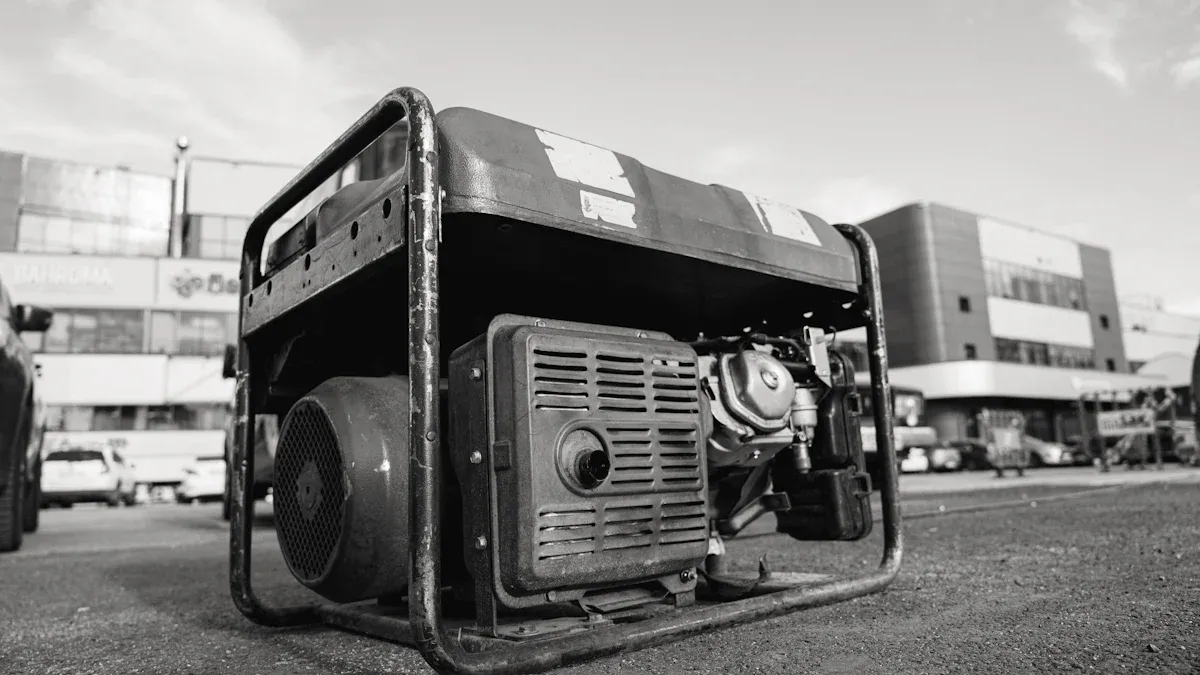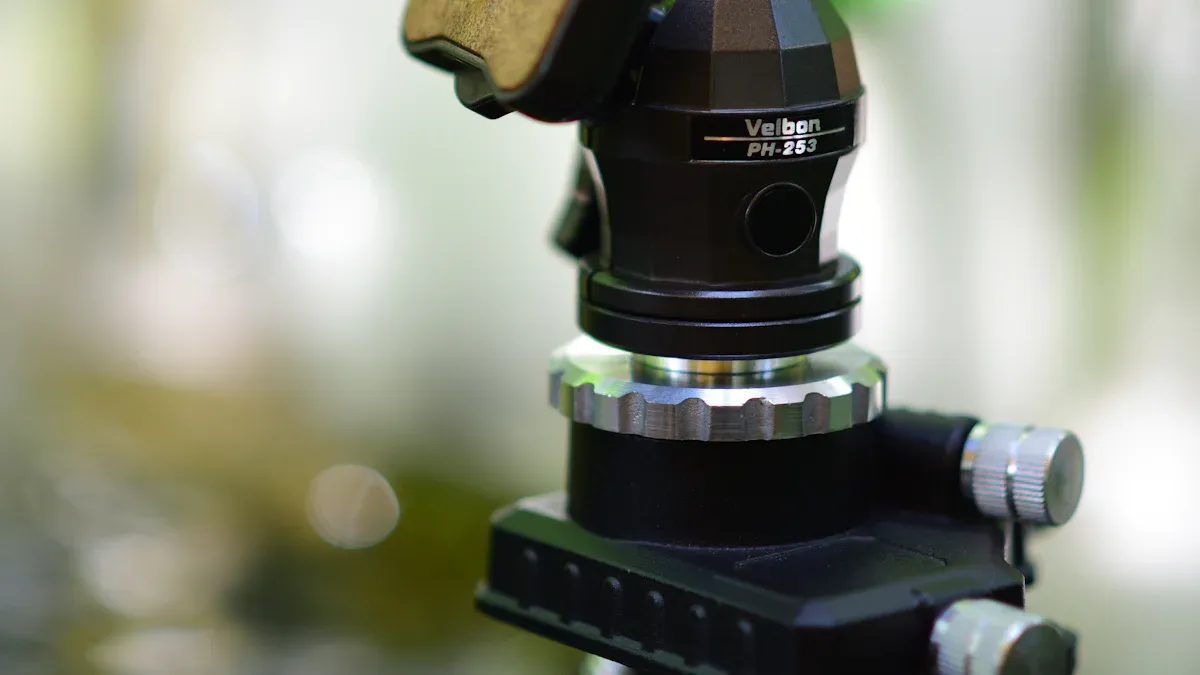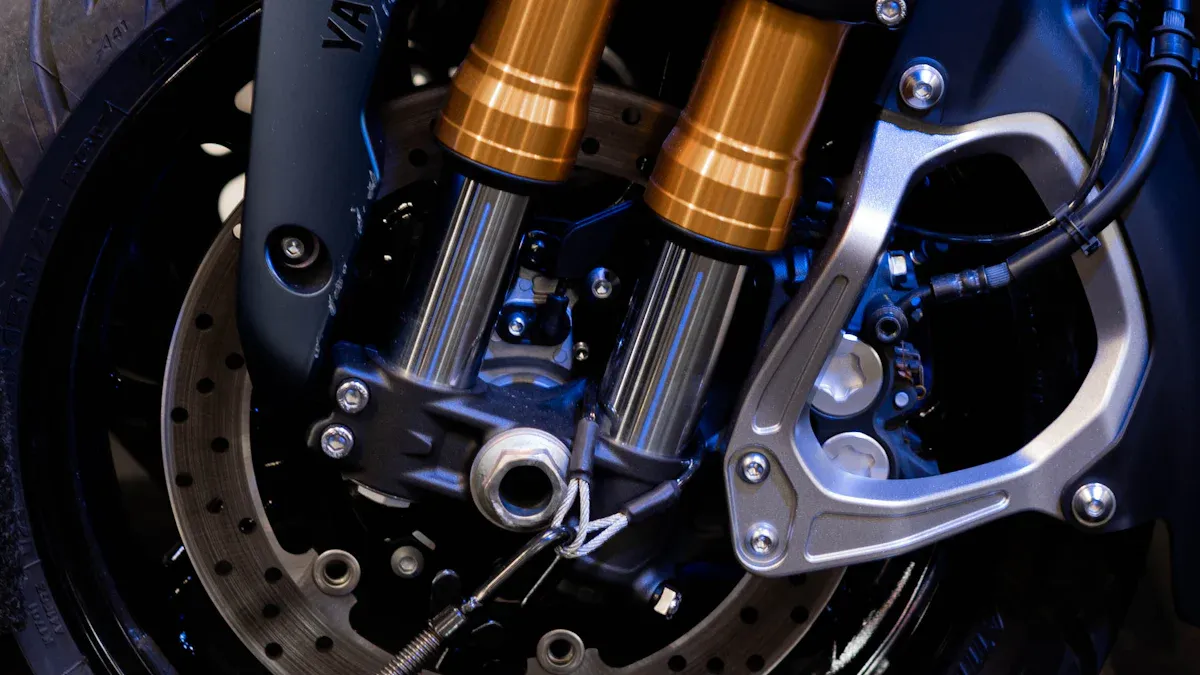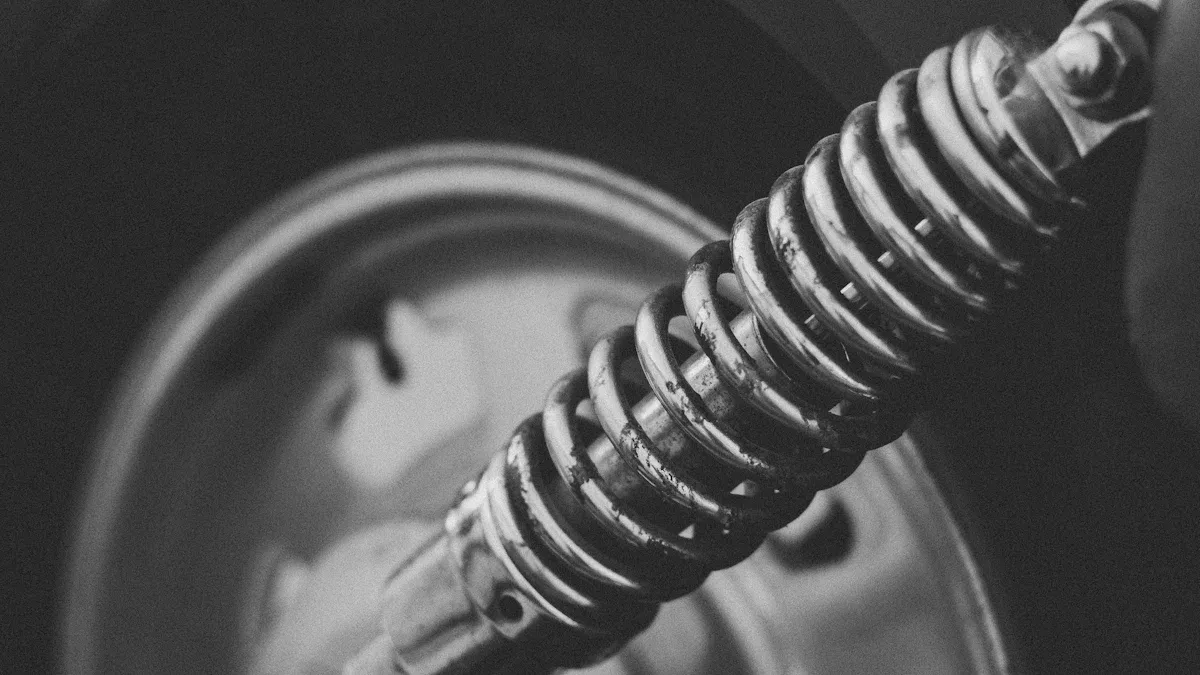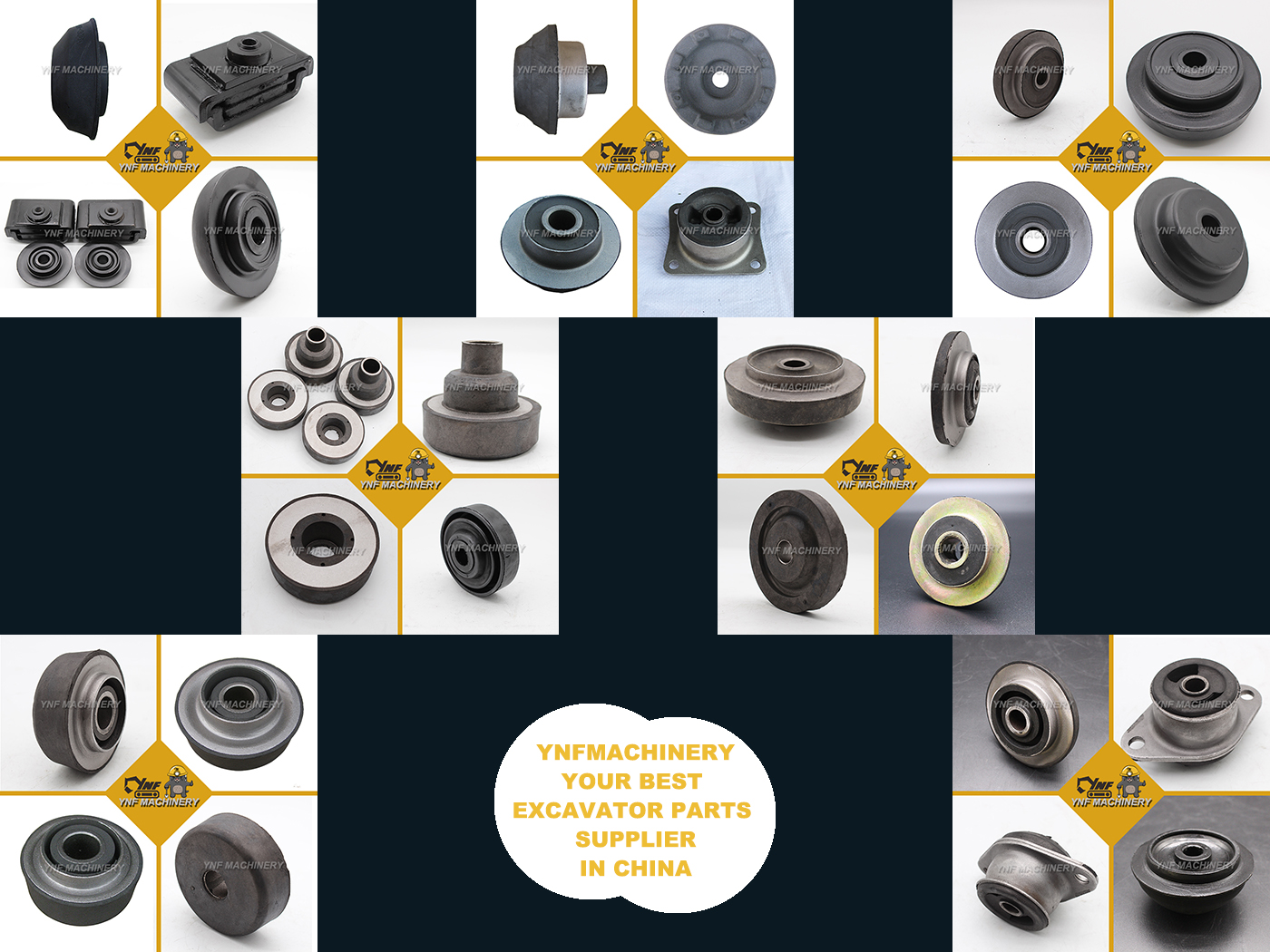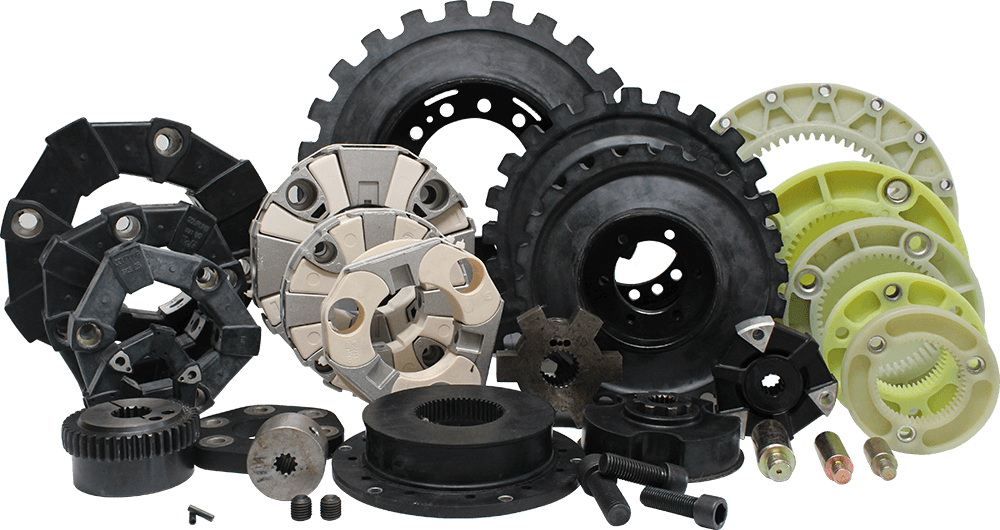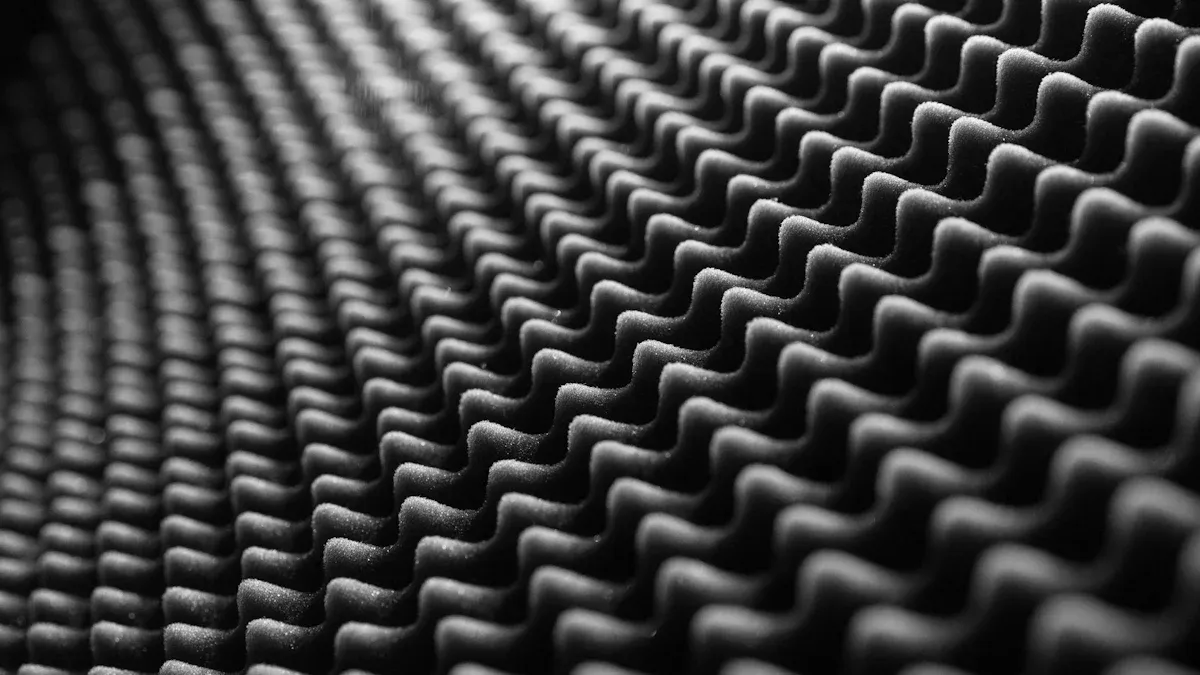
Vibration isolation mounts work like cushions between your equipment and the place it sits. These mounts take in and soften vibration energy. This helps keep machines safe and makes them quieter. Using vibration isolation lowers the chance of damage. It also helps your equipment last longer. Vibration can cause big problems, especially in factories.
Cause of Equipment Failures | Percentage of Failures |
|---|---|
Lubrication and Bearing Defects | 67% |
Failures Detectable by Vibration Sensors Only | 16% |
You can see that vibration isolation mounts are very important. They help stop many of these problems. Picking the right mounts helps protect delicate systems in many places, like factories and labs.
Key Takeaways
Vibration isolation mounts work like soft pads. They soak up shaking and keep machines safe from harm. Choosing the best mount material and shape helps cut down shaking, noise, and damage to machines. Different mounts fit different uses. Some are for small machines. Others are for big factory machines or fragile lab tools. Using vibration isolation mounts makes machines safer. It also makes them quieter and helps them last longer. Active and passive isolation systems give choices for many needs and prices.
Vibration Isolation Mounts
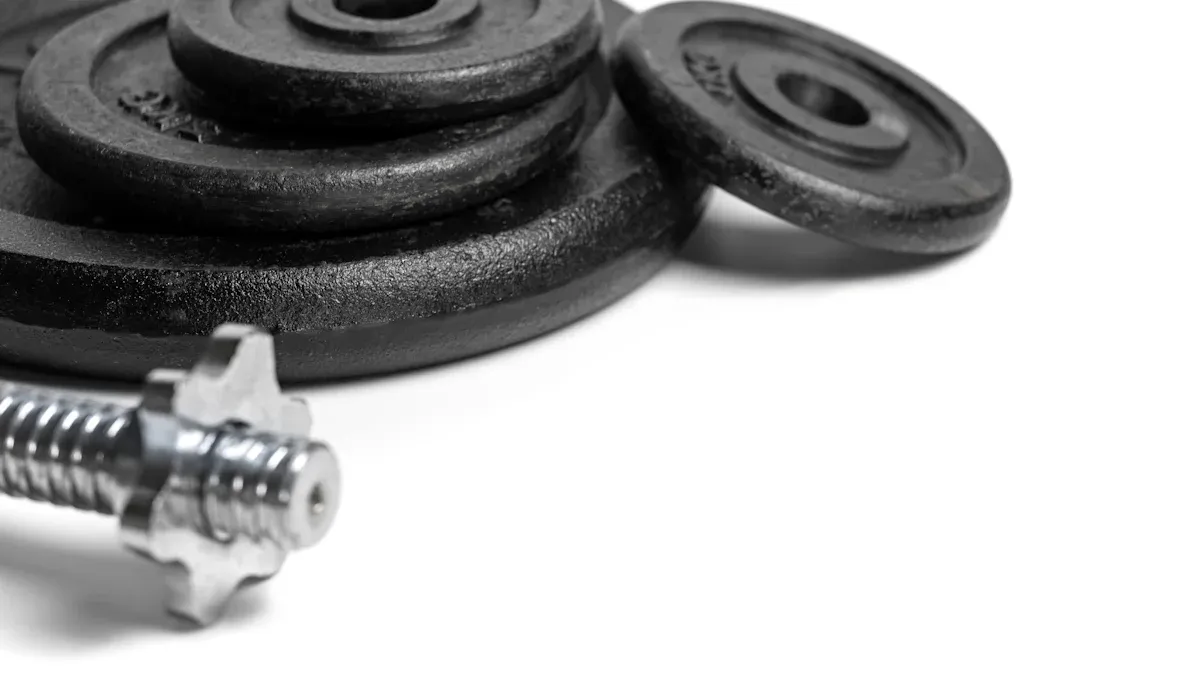
Definition and Purpose
Vibration isolation mounts help keep equipment safe from vibration. These mounts work like shock absorbers. They make machines steady and protect them. When you use vibration isolation mounts, your equipment gets many benefits:
They soak up vibration energy. Materials such as rubber or foam take in the shaking and stop it from moving around.
They separate your machine from its base. This stops vibration from going into the floor or other machines.
They use springs. Springs let the mount move a little, so your equipment feels less vibration.
They use damping. Damping helps stop shaking fast, so your machine does not keep moving.
They keep your equipment safe. Less vibration means less damage and longer life for machines.
They help machines work better. Stable machines make better products.
They make work safer. Less vibration means fewer injuries.
They lower noise. Controlling vibration makes your space quieter.
They save power. Machines that shake less use less energy.
Tip: The right vibration isolation products help your equipment last longer and work better.
Materials and Design
Vibration isolation mounts are made from different materials. Each material has special features that help stop vibration. Here is a table with common materials and their benefits:
Material | Properties and Advantages |
|---|---|
EPDM | Strong, stands up to weather and heat, can be made in different weights and hardness. |
Natural Rubber | Very strong, great at soaking up vibration, not good for outdoor or oily places. |
Neoprene | Handles oil, sticks well to metal, works in tough places, but costs more. |
Silicone Rubber | Works in hot and cold, stays bendy, lasts a long time, good for many uses. |
Polyurethane | Comes in many types, absorbs shocks well, strong, and works in different temperatures. |
The way vibration isolation mounts are made is important too. You need to match the mount’s resonance frequency to your machine’s main vibration. You can change the shape or material to make the mount harder or softer. Some mounts use more than one layer or type of material. This helps them work with many kinds of vibration.
Note: Picking the right material and design gives you the best vibration isolation for your equipment.
Vibration Isolation Systems
Vibration Science
It is important to know how vibration affects machines. Every machine has its own natural frequency. If a motor or other source vibrates at this same frequency, resonance happens. Resonance makes the shaking much stronger. Even small forces can cause big movements. This can break bolts and damage welds. Bearings can wear out faster. You might see this in bridges that shake when people walk together. Machines can also get loud and shaky at certain speeds.
When the vibration matches the natural frequency, shaking gets much bigger.
Big vibrations can break things, so you want to stop resonance.
The time between the force and the movement changes with frequency and system parts.
You can test for natural frequency and damping by using controlled vibration.
Engineers try to keep shaking small by changing how stiff, heavy, or damped the system is.
Car suspensions show how natural frequency affects vibration.
Aspect | Explanation / Evidence |
|---|---|
Effect of Resonance on Equipment Performance | Resonance makes vibration much stronger when the force matches the natural frequency. This can break bolts, welds, and foundations. Bearings can wear out early. Machines can get noisy and make bad products. |
Quantitative Evidence | If you run a machine within 15% of its natural frequency, vibration can get 2 to 5 times bigger. This is bad for machines. |
Real-World Example | Some bridges have broken because people walked in step and caused resonance. This shows how dangerous resonance can be. |
Causes of Changing Natural Frequency | Things like wear, misalignment, broken parts, bearing problems, oil changes, and cracks can change how stiff or heavy a system is. This can move the natural frequency and make resonance hard to predict. |
Vibration Isolation Strategies | You can change the natural frequency by making the system stiffer or heavier. You can also go through resonant speeds quickly or add dampers to stop shaking. |
Importance of Monitoring | Good vibration monitoring helps you find resonance early. This can stop damage and save money on repairs. |
You can see that stopping vibration is not just for comfort. It keeps your machines safe and your workplace safer.
Absorption Mechanisms
Vibration isolation systems use different ways to stop vibration. The main goal is to keep vibration from moving from one part to another. There are several ways to do this:
Vibration-Suppression Mechanism | Vibration Amplitude Reduction | Effectiveness Notes |
|---|---|---|
Fluid Damper | Up to 40% less vibration | Best at stopping shaking because of damping force |
Suspension | Not as strong, no damping | Only lets parts bend, does not stop shaking much |
Spring | Not as strong, no damping | Works like suspension, not as good at stopping shaking |
Laminated Rubber | Not as strong, but stiffer | Does not stop vibration as well as fluid dampers |
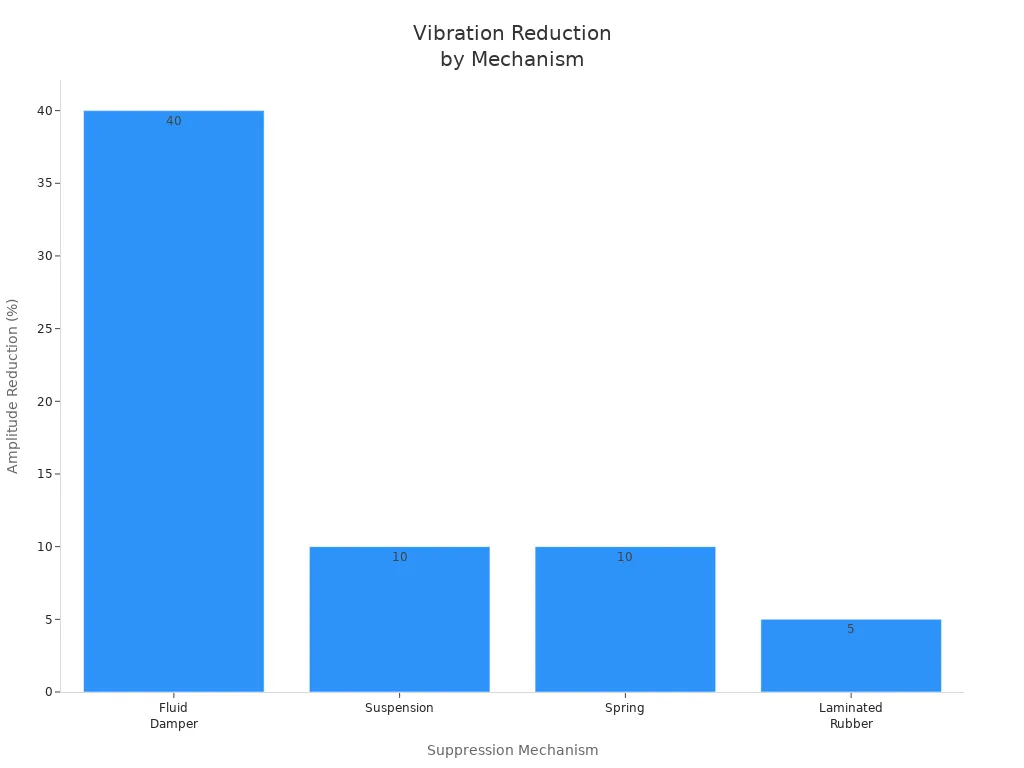
Fluid dampers are best at stopping vibration. They use oil or other liquids to soak up energy. Springs and rubber mounts help too, but not as much as fluid dampers. New designs, like mesh cushions with air pockets, use air to help stop vibration. Some smart materials, like magnetorheological fluids, can change how they work to match different vibration levels. These are good for cars and machines that need quick changes, but they may not work as well for heavy loads as fluid dampers.
Types of Isolation Mounts
There are many types of vibration isolation mounts. Each type works best for certain jobs. Here is a table to help you compare:
Mount Type | Description | Typical Applications | Performance Characteristics and Benefits |
|---|---|---|---|
Made from flexible rubber that absorbs and dampens vibration. | HVAC, generators, car parts | Good for light to medium vibration, not expensive, strong, easy to use, and works for many jobs. | |
Spring Vibration Isolator Mounts | Use metal springs to soak up vibration, made for heavy loads and fast shaking. | Big machines, large HVAC, compressors | Great for heavy jobs, can hold a lot of weight, good for fast shaking, and last a long time. |
Hanger Mount Vibration Isolators | Use both rubber and metal to stop vibration in hanging equipment. | Hanging pipes, ductwork, ceiling HVAC | Stops vibration from moving through buildings, makes things quieter, and works for hanging systems. |
Floor Mount Vibration Isolators | Made to stop vibration from machines on the floor, use rubber, springs, or both. | Big machines, compressors, pumps | Good for floor machines, can be made to fit special needs. |
Rubber and Spring Combination Mounts | Use both rubber and springs to get the best of both. | For jobs that need the best dampening and support | Great at stopping vibration and holding weight, good for tough jobs. |
Rubber mounts have built-in damping. They soak up energy and stop resonance. They are good for light to medium vibration. Spring mounts are for heavy loads and fast shaking. They need extra damping to work their best. Combination mounts use both rubber and springs to give you both benefits.
You can pick passive or active vibration isolation systems. Passive systems use simple parts like springs and rubber. They start working above 4-5 Hz and can block up to 99% of vibration at higher frequencies. They cost less and need little care. Active systems use sensors and feedback to stop vibration in all directions. They work at very low frequencies and react fast. These cost more but give better control and quick response.
Aspect | Passive Vibration Isolation Systems | Active Vibration Isolation Systems |
|---|---|---|
Mechanism | Use simple parts with natural shaking (1-3 Hz) | Use feedback to stop low-frequency shaking |
Frequency Isolation Start | Start blocking vibration above 4-5 Hz | Start blocking at very low frequencies |
Vibration Attenuation | Block up to 98-99% of vibration past 30 Hz | Keep blocking vibration at all frequencies |
Axes of Isolation | Usually only block up and down movement; sideways needs extra parts | Block vibration in all directions |
Sensitivity to Load | How well they work depends on size and weight; best near 80-90% of load limit | Adjust for changes in weight; keep working well within limits |
Settling Time | Take longer to stop moving (seconds to minutes) because of soft springs | Stop moving very fast (milliseconds) because of stiff springs |
Noise Damping | Only stop vibration from the ground | Also stop noise from the machine itself |
Maintenance and Operation | May need air or manual pumping; sometimes need new parts | Only need power; work all the time with little care |
Cost | Cost less; good for less sensitive or cheaper machines | Cost more, often over five thousand dollars; not good for cheap machines |
Advantages | Simple, cheaper, work well at higher frequencies | Work well at low frequencies, block in all directions, stop fast, block machine noise |
Disadvantages | Make low-frequency noise worse, only block some directions, change with weight, take longer to stop moving | Cost more, need power |
Tip: When you choose vibration isolation mounts, think about your machine’s weight, the kind of vibration, and where it will be used. This helps you get the best safety and performance.
Applications of Vibration Isolation
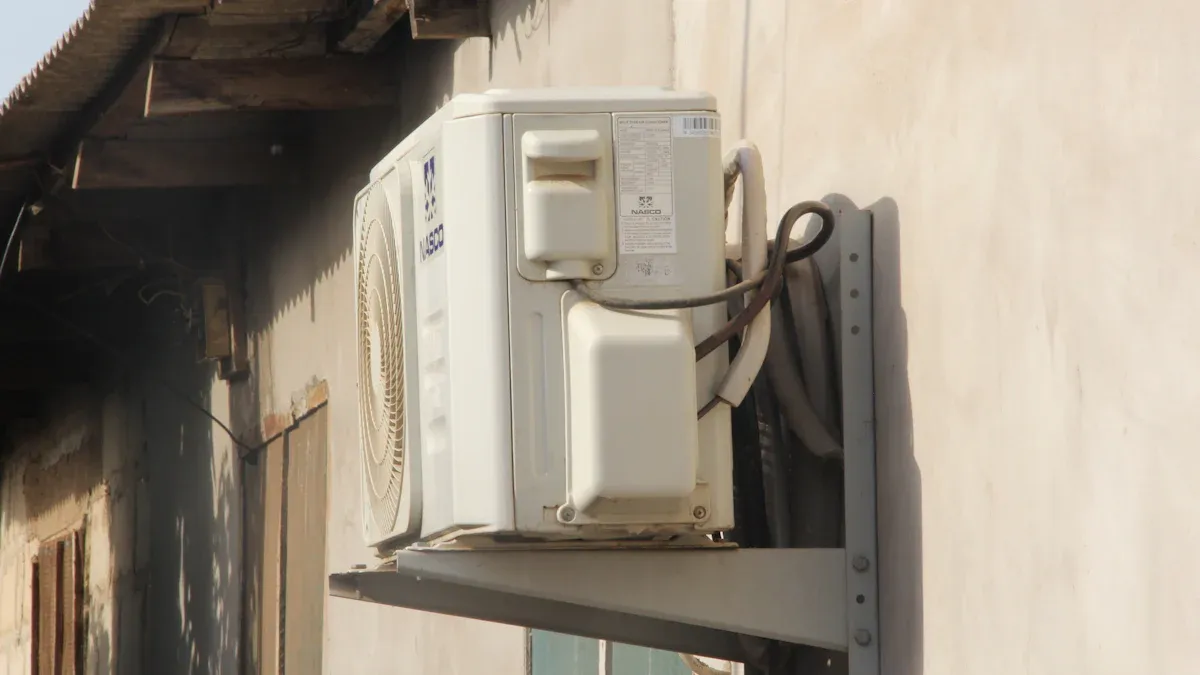
Vibration isolation is important in many places. These systems protect equipment from shaking and loud sounds. Many industries use vibration isolation and anti-vibration mounts. This helps machines work better and last longer.
Industrial Equipment
Factories use vibration isolation for big machines. Anti-vibration mounts go under presses, pumps, and generators. These mounts stop vibration from moving to the floor and other machines. This keeps things safe and makes less noise. Heavy-duty mounts are good for strong vibrations. They help machines last longer and save money on repairs.
HVAC Systems
HVAC systems can make a lot of vibration. Anti-vibration mounts stop this shaking from moving through walls and ceilings. These mounts keep buildings quiet and protect pipes and ducts. Many HVAC units need heavy-duty mounts to work well.
Automotive and Transport
Cars, trucks, and trains shake from roads and engines. Vibration isolation makes rides smoother and protects parts. Special mounts soak up shocks and lower vibration. Some mounts have special shapes to block vibration energy. This helps vehicles stay steady, even on bumpy roads.
Electronics and Labs
Electronics and lab tools need steady places to work. Even small shakes can mess up results or break devices. Anti-vibration mounts made from rubber, polyurethane, or air keep things still. Air mounts help control delicate lab tools. These mounts help you get good measurements and data by stopping vibration.
Tip: Labs need vibration isolation mounts for accurate and steady results.
Civil Engineering
Bridges and buildings use vibration isolation too. Anti-vibration mounts stop shaking from trains, cars, and machines. This keeps buildings safe and comfy for people. Civil engineers use bearing and spring isolation in many projects. These mounts lower noise, protect buildings, and keep them safe for a long time.
Vibration isolation mounts help bridges and buildings stay strong.
They block ground shaking from trucks and trains.
Special mounts are made for each project.
Anti-Vibration Mounts
There are many kinds of anti-vibration mounts for different jobs. Here is a table with common types and what they do:
Type of Anti-Vibration Mount | Description | Typical Applications |
|---|---|---|
Elastomeric Compression Mounts | Low-frequency mounts for shock and vibration isolation. | Heavy machinery, trucks, marine engines |
Elastomer-in-Shear Mounts | Rugged isolators for low-frequency vibration and noise control. | Industrial machines needing noise reduction |
Lightweight Isolators | Compact mounts for protecting electronics. | Small devices, lightweight equipment |
Engine Mounts (Rubber) | Designed for small to medium engines, isolating vibration and noise. | Vehicles, industrial engines |
Conical Rubber Isolators | Heavy-duty mounts for high impact and tough conditions. | Off-road equipment, construction machinery |
Pneumatic Mounts | High-capacity mounts with shock protection. | Equipment needing high deflection isolation |
Leveling Mounts | Provide vibration protection and leveling for heavy machines. | CNC machines, presses |
Neoprene Isolation Pads | Economical pads for general vibration and noise control. | General machinery |
When you pick anti-vibration mounts, think about weight, place, and where you will put them. The right mount protects your equipment, lowers noise, and makes things safer. YNF Rubber has many vibration isolation mounts for all these uses. They are a trusted company for your needs.
Benefits of Vibration Isolation
Equipment Protection
You want your equipment to be safe and work well. Vibration isolation helps you do this. Mounts stop harmful vibration from getting into machines. This keeps parts from wearing out or breaking too soon. Studies show three-dimensional vibration isolation systems lower the chance of failure. Rubber isolation bearings help by cutting down shaking and giving steady support. Using recycled rubber materials gives even more benefits. These materials make vibration weaker and help equipment last longer. You can also protect sensitive devices with rubber sheets under them. This easy step lowers vibration and keeps tools safe.
Tip: The right vibration isolation mounts mean fewer repairs and less downtime for your machines.
Noise Reduction
Vibration does not just hurt equipment. It also makes noise. Vibration isolation lowers noise in your workspace. This makes your area safer and more comfortable. In marine places, elastic mounts can cut underwater noise by up to 37 dB. Mineral wool can lower it by 20 dB. These numbers show how much quieter machines can be. Lower noise helps you follow safety rules at work. Vibration isolation mounts keep workers safe from loud sounds and help you meet noise laws.
Mitigation Measure | Noise Reduction Achieved (dB) |
|---|---|
Elastic mounts | Up to 37 |
Mineral wool | Up to 20 |
Longevity and Performance
You want your machines to last and work their best. Vibration isolation helps with both. Blocking vibration stops wear and tear. This means your equipment works longer and needs less fixing. Research shows vibration isolation systems, like air springs, help machines work better. You can adjust the system to make equipment more stable. Power flow transmissibility is a good way to check this. Less vibration means better results and fewer problems. Industries using vibration isolation have fewer breakdowns and save money on repairs. You also get more reliable and accurate machines.
Note: For the best results, pick a trusted supplier like YNF Rubber for your vibration isolation mounts.
You can keep your equipment safe from vibration with vibration isolation mounts. These mounts soak up vibration and make machines quieter. Many industries use these mounts to help machines work better and last longer. New materials and smart technology make vibration isolation work even better and help the environment. Experts say you should pick the right mount for your machine and test it after you put it in. You can trust suppliers like YNF Rubber for good solutions.
FAQ
What is the main job of a vibration isolation mount?
A vibration isolation mount absorbs and reduces shaking. You use it to keep your equipment safe and steady. This helps your machines last longer and work better.
How do I choose the right vibration isolation mount?
You should check your machine’s weight and the type of vibration it makes. Look at the space you have. Pick a mount that matches these needs for the best results.
Can vibration isolation mounts lower noise?
Yes, these mounts help lower noise. They stop vibration from moving into floors and walls. This makes your workspace quieter and safer for everyone.
Where can I buy quality vibration isolation mounts?
You can find reliable mounts from trusted suppliers. YNF Rubber offers many types of vibration isolation mounts. You get strong products and expert help for your equipment needs.


